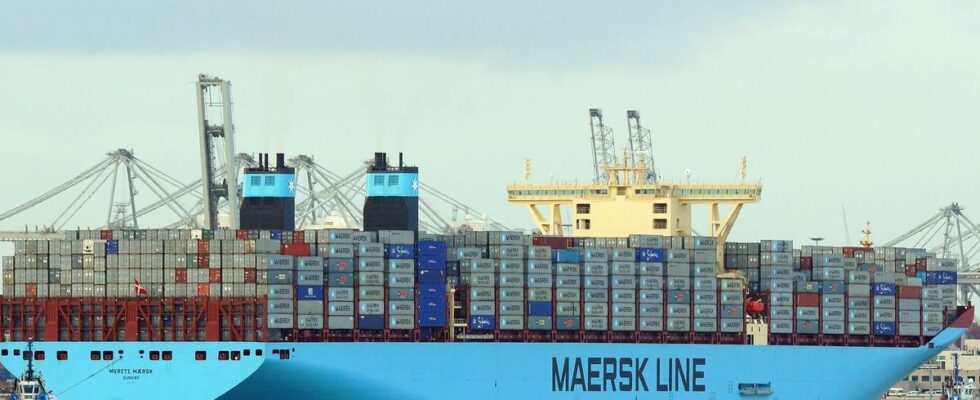– It is not a very efficient way of using energy, says Sintef researcher Anders Valland. An Australian company has plans to build a large ammonia factory in Bremanger in Sogn og Fjordane. The factory could end up using nearly four times as much electricity as the Alta power plant produces. This factory is planned to be located by the fjord in Bremanger municipality. Photo: Fortescue Metals Group The aim is to make 225,000 tonnes of ammonia annually. Ships can use this as fuel. The production is enough to operate seven of the world’s largest ships, according to Sintef researcher Valland. The company Fortescue believes this is a good use of our renewable energy. – It is efficient to use Norwegian energy for this. We can build a Norwegian value chain to replace fossil fuel in the maritime industry in Norway, says the Norwegian manager of Fortescue, Thor Magnus Rovik. Married to the tank Fortescue is an industrial giant from Australia. The company will build the ammonia factory on the scenic Holmaneset in a quiet Westland fjord. Ammonia is a chemical substance with many uses. Around half of the energy disappears when ammonia is made in a renewable way, according to Anders Valland in Sintef Ocean. Photo: Morten Andersen / news Perhaps there is a solution to the large climate emissions from shipping. Ammonia can be made in a renewable way, and it does not release CO₂ when used. But the obstacles are great: It is very labor-intensive to make. The price is many times as high as fossil fuel. It is toxic to humans, animals and marine life. It is also caustic for living tissue. Here at Holmaneset, the factory can come. It is located in Svelgen in Bremanger municipality, where the population is in free fall. Photo: Steinar Lote / news The financial risk is sky high – both for the factory and the shipowners’ association that owns the ship. – We are struggling to implement the first projects, says Magnus Eide, head of the Green Shipping Programme. Facts about the project 2.1 kg of ammonia replaces 1 kg of heavy oil Renewable ammonia costs around 1,000 dollars per ton The price of the fuel is around 4.2 times the current price of heavy oil The aim is to start construction in 2025 and production from 2027 The EU has supported the factory with 204 million euros Can cut CO₂ equivalent to up to 1 percent of Norway’s total emissions, according to Fortescue Say no to public health millions Reiarlaga wants guarantees about the price of the fuel. The state would rather support the development of technology and the construction of ships that can use green fuel. One billion kroner was distributed this summer. According to Magnus Eide, it is very difficult to get the project completed, even when the state distributes millions. Last week, a new 777 million was given to the development of green shipping. Nevertheless, the state expects that more people who have been awarded money will throw in the towel. – We expect that there may be some cancellations, says Elin Ulstad Stokland in Enova. Large emissions But in Svelgen, Fortescue believes in gold and green boats. The EU is spitting nearly NOK 2.4 billion into the factory. Rovik in Fortescue believes that the market exists. – There is more and more demand, he says. All the wind turbines in the picture supply enough current to make green fuel for between one and two ships. Photo: Ingrid Lindgaard Stranden Shipping accounts for 3 percent of the world’s greenhouse gas emissions. Politicians have decided that the vessels will move away from fossil fuels. And battery operation works poorly in many cases. Fuels such as ammonia, hydrogen, biofuel and methanol are seen as relevant for the future. Can still turn around Ammonia is also used in artificial fertiliser, and here the willingness to pay is far higher. Fortescue says they sniff different markets. Although the engineers at Fortescue are working hard, the company has not made a final decision to invest. But a lot is right. They have bought land, gained capacity on the power grid and entered into an agreement to buy power. Shipping accounts for 3 percent of the world’s greenhouse gas emissions. Photo: NTB In addition, they will build an equally large factory in Hemnes in Nordland. Then the politicians in Bremanger will also have their say. It is a municipality with a population in free fall. But locals are worried about safety and whether the power cut will choke the local cornerstone company. But Fortescue believes such an ammonia industry could be very valuable for Norway. – This project is ideally located where we can get many additional benefits. And it is a product that Norway and Europe need. This is the calculation. Fortescue has an agreement for the supply of 300MW of electricity. If this is delivered throughout the year, the consumption will be 2,628 TWh The Alta power plant produces 694.7 GWh annually. 2.628 TWh is 94.5 percent of quadruple power production from the Alta power plant Fortescue will produce 225,000 tons of ammonia a year The energy content of ammonia is approximately 45 percent of the energy content of diesel per kilogram 225,000 tons of ammonia replaces 102,000 tons of diesel. The starting point for the calculation is a container ship that requires 10 MW power and consumption of 180g/kWh. The efficiency is around 46 per cent. The ship will then use 43 tonnes of ammonia per day. If the ship sails 48 weeks a year, the consumption will be 14,500 tonnes a year. Just over 7 ships can thus use the ammonia from the factory Published 14.11.2024, at 19.23
ttn-69
The new ammonia plant will use power equivalent to four Alta power plants

